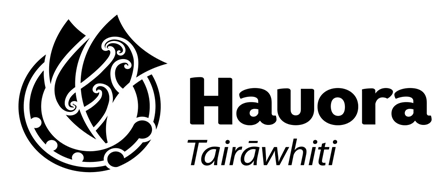
Sponsor: CCM Medical / Mental Health Name: Restraint Minimisation and Safe Practice
ORGANISATIONAL
POLICY:
RESTRAINT MINIMISATION AND SAFE PRACTICE
AUTHORITATIVE SOURCE:
NZS 8134.2: 2008 Health and Disability Services (Restraint Minimisation and Safe Practice) Standards.
AUTHOR:
RMSP Committee.
PURPOSE:
Restraint is a serious intervention that requires clinical rationale and oversight. It is not a treatment
in itself but is one of a number of strategies used to limit or eliminate clinical risk.
The use of Restraint should only be used in the context of ensuring, maintaining, or enhancing the
safety of the consumer, service providers, or others
”, (NZS 8134.2: 2008 Health and Disability
Services (Restraint Minimisation and Safe Practice Standards).
This policy sets out Hauora Tairāwhiti standards in relation to the use of restraint.
The intent of the policy is to maintain consumer safety and wellbeing and, where possible, to limit
the use of restraint in all its forms.
Hauora Tairāwhiti considers that restraint minimisation and safe practice in Mental Health and
Addiction Services is underpinned by ‘Recovery’ orientated service delivery.
SCOPE:
This policy applies to all employees of and contractors to Hauora Tairāwhiti and all consumers who
receive care or services from the organisation.
POLICY STATEMENTS: The Hauora Tairāwhiti policy for restraint management is that:
Authorised restraint is an approved, skilled intervention that may be used to prevent individuals
from harming themselves, others or seriously compromising the therapeutic environment.
Restraint is to be used as a last resort only after less restrictive interventions have been
attempted and found inadequate.
Local procedures for use of restraint in clinical areas shall reflect robust clinical decision-making
processes, meet Maori cultural requirements and be approved by the Hauora Tairāwhiti
Restraint Minimisation and Safe Practice Committee.
Where any form of restraint or Enabler
is used, there must be appropriate documentation in the
clinical record and appropriate monitoring of the consumer’s clinical outcomes.
Use of medication for restraint without valid clinical indications is considered to be an abuse and
is not supported by Hauora Tairāwhiti.
Author: Restraint Committee
Date of first approval: April 1999
Authorised By: Clinical Board Date last review completed: January 2015 Page
1 of
9
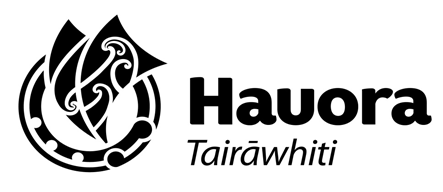
Sponsor: CCM Medical / Mental Health Name: Restraint Minimisation and Safe Practice
Seclusion and restraint shall not be used by services for punitive reasons; or as a component of
consumer’s treatment plan to modify unwanted behaviour. Seclusion may only be used to
manage safety and can only occur in the designated seclusion rooms that exist in Ward 11.
Where equipment is used as an Enabler, it shall be voluntary and only be used following an
appropriate assessment. Enabler use shall be monitored and evaluated.
Unauthorised use of restraint may be considered unlawful and is an infringement of a person’s
rights.
EXCLUSIONS:
This policy does not apply to:
Planned safe holding or technical positioning which may occur as part of clinical procedures or in
managing clinical symptoms (see definitions for clarification).
Domestic security - locking of external doors at night for general security.
Use of restraint applied by police officers who have responsibility for safe law enforcement
restraint.
Use of restraint applied by Security staff contracted to work within Hauora Tairāwhiti and
operating under Section 41 and 48 of the Crimes Act.
PROCESS:
1. Standards
The requirements of legislation, external standards and relevant professional codes of practice
are met throughout restraint to ensure consumer rights are protected and the use of restraint is
actively minimised.
All use of restraint shall:
o promote the safety of all involved
o be based on effective risk assessment and clinical decision making
o focus on de-escalation and the minimisation or elimination of restraint
o reflect best practice healthcare to the consumer and be free from discrimination, coercion,
harassment, sexual, financial or other exploitation
o respect the specific cultural needs of the consumer
o not intentionally compromise the consumers dignity, privacy, confidentiality, respect,
treatment and recovery
o be documented on the Hauora Tairāwhiti Restraint Use Form and Observation Forms
(Appendix 1)
o be documented on a Hauora Tairāwhiti Incident Form.
Relevant cultural support will be provided.
Staff must ensure that each episode of restraint is documented in the clinical notes and incident
form. This should include sufficient detail to provide an accurate account of the indication for
use, intervention, duration of restraint as well as the outcome and debrief for consumer and
staff.
Appropriate and timely communication with the consumer and where applicable their
whanau/family of all decisions relating to restraint intervention must occur.
Staff using restraint will be trained in the use of restraint and shall have completed the
appropriate self-directed learning package.
For staff employed within MHAS and the contracted Security Guards, there is a requirement to
complete an approved Personal Restraint programme within 6 months of employment.
Author: Restraint Committee
Date of first approval: April 1999
Authorised By: Clinical Board Date last review completed: January 2015 Page
2 of
9
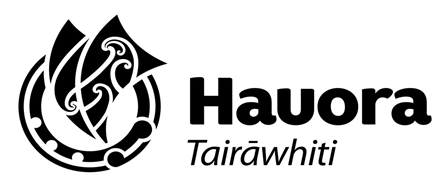
Sponsor: CCM Medical / Mental Health Name: Restraint Minimisation and Safe Practice
Access to advocacy and support services will be offered. Staff must also ensure consumers are
informed of this right, and facilitate this access where the need is identified or requested.
Each episode of restraint shall be evaluated in collaboration with the consumer, and where
applicable; whanau/family.
Evaluation methods may include relevant documentation/record review, interviews with staff,
consumer, family/whanau, advice from Cultural advisors, visual inspections, service and staff
questionnaires, and Maori focused audits,. (NZS 8134.0.2008, p.17)
2. Use of Enablers
The use of Enablers must be
voluntary and be the least restrictive option to meet the needs of the
consumer with the intention of promoting or maintaining consumer independence and safety.
An Enabler
is defined as any equipment, device or furniture, voluntarily used by a consumer that
limits normal freedom of movement, with the intent or purpose of promoting and/or
maintaining independence, comfort and safety e.g. bedrails, lap belts.
An Enabler must only be used following an appropriate assessment. Documentation must
include consumer agreement and show evidence that the use of the Enabler
has been monitored
and evaluated for effectiveness e.g. care plan.
Verbal consent is to be obtained where an enabler is used and documented in the consumer
notes.
An Incident form is to be completed by staff when verbal consent cannot be obtained either by
the consumer or by the family, as this is classed as restraint.
Refer to use of enablers.
3. Use of Restraint 3.1 Consideration Prior to Use of Restraint Use of restraint must be considered as the option of last resort. Services shall ensure a
comprehensive assessment of consumers is undertaken and care processes reflect the intent of
ensuring consumer safety and wellbeing which actively minimises the use of restraint.
The following factors must be considered prior to the use of restraint:
o consumer’s physical and psychological health and intellectual capability.
o clinical conditions that may cause behavioural changes must be considered prior to the use
of restraint e.g. pyrexia, pain levels, dehydration, continence etc.
o the degree of risk to the individual, others and the environment
o existing advanced directives.
o past history of restraint and evaluation of episodes; use of enablers.
o any history of trauma or abuse which may have involved the consumer being held against
their will.
o identified desired outcomes and criteria for ending restraint (this is to be explicit and as
much as practicable, made clear to the consumer).
Restraint must always be used in a manner that maximises the safety of the consumer and
others. It must involve the use of the minimum level of force necessary to achieve and maintain
safe control.
De-escalation techniques and other alternative interventions or strategies must be considered.
If the behaviour is threatening and presents a high level of danger to staff or public safety, then
security or police intervention shall be considered and accessed as appropriate.
Author: Restraint Committee
Date of first approval: April 1999
Authorised By: Clinical Board Date last review completed: January 2015 Page
3 of
9
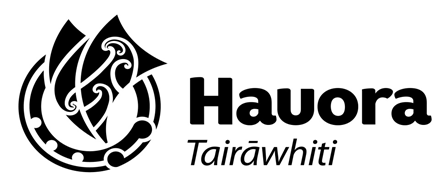
Sponsor: CCM Medical / Mental Health Name: Restraint Minimisation and Safe Practice
3.2 Indications for Use of Restraint
Restraint may be considered as one of a range of possible interventions in the care setting.
The following are situations where restraint may be appropriate:
o when a consumer’s condition or behaviour indicates an immediate and ongoing high risk of
serious self-harm (either deliberate or unintentional).
o when a consumer’s behaviour poses immediate and ongoing serious risk to others e.g. when
an individual makes, or is likely to make a sustained or serious attack on another person.
o when it is necessary to give essential clinical treatment to an individual who is refusing
treatment, and the treatment has been deemed to be clinically necessary by a registered
health professional (preferably in consultation with the clinical team) e.g. consumers
admitted under the Mental Health Act, consumers with head injuries, etc.
o when there is legal justification to carry out the prescribed treatment against the
consumer’s will.
3.3 Education and Training in Restraint All staff will have knowledge of “The Code of Health and Disability Service’s Consumers Rights
1996”, including assisting consumers to access the information.
All staff shall have knowledge of scopes of practice, relevant legislation and TDH relevant policies
and procedures including knowledge of the Tikanga Best Practice Guidelines and other cultural
considerations regarding the use of restraint.
Practice and training in use of restraint must ensure that any techniques are firmly grounded in
the context of good clinical practice and be relevant to the service where restraint is used.
All staff using restraint must be appropriately trained.
All other Hauora Tairāwhiti staff should complete the RM&SP self directed learning package
available on the Tairāwhiti intranet.
It is the responsibility of the Clinical Nurse Manager or Service Manager to ensure that individual
records of restraint training, education and competency are held for staff.
3.4 Initiating and Using Restraint The decision to use restraint must be made by a registered health professional, and documented
in the consumer’s clinical record.
Medical staff shall be informed that the restraint has been applied and the rationale for this as
soon as practicable.
Only techniques of restraint endorsed by the Restraint Minimisation and Safe Practice
Committee (RMSP Committee) will be applied.
Restraint is initiated
only when adequate resources are assembled to ensure safe initiation and
use.
Family and/or consumer’s advocate may be consulted to advocate for the consumer.
Requirements for documentation must be met (see section 4 on Documentation).
Upon initiation of restraint, a Hauora Tairāwhiti Observation Form is completed.
An Incident Form must be completed, the white copy is given to the Charge Nurse/Team Leader
and the pink copy sent to Nursing and Quality Services.
Use of seclusion
must not occur outside the Mental Health and Addiction Services –inpatient
Ward 11/ Te Whare Awhiora.
Where a consumer requires one-to-one supervision or constant observation, the requirements of
the TDH policy on the
Standard Special and Constant Observations policy must be complied
with.
Author: Restraint Committee
Date of first approval: April 1999
Authorised By: Clinical Board Date last review completed: January 2015 Page
4 of
9
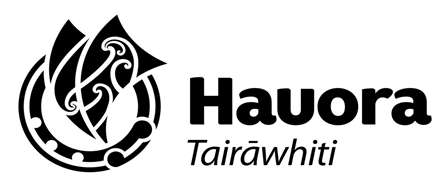
Sponsor: CCM Medical / Mental Health Name: Restraint Minimisation and Safe Practice
3.5 Monitoring and Care during Restraint
Hauora Tairāwhiti Restraint policy and procedures inform and guide services in ensuring
adequate and appropriate observation, care, dignity, respect and ongoing assessment occurs to
minimise the risk of physical and psychological harm to consumers during restraint.
The frequency and level of observation and assessment should be appropriate to the level of risk
associated with the restraint procedure, and setting in which it is occurring.
Monitoring of physical restraint is recorded as per approved procedure, in the consumers care
plan, using the Hauora Tairāwhiti Observation Form.
Reassessment and documentation of the continuing need for restraint use shall occur at each
monitoring time as stated in the restraint procedure.
If there is any clinical, physical or psychological deterioration noted, the consumer must be
reassessed by a health professional, appropriate action and treatment given and a Hauora
Tairāwhiti Incident form must be completed.
3.6. Restraint Procedures
Every service/area using restraint must:
o use the approved restraint procedures before the restraint can be applied.
Restraint procedures shall identify:
o a description of types of restraint that can be used.
o how the consumer’s personal and cultural needs will be met.
o standards for maintaining effective and timely communication (where clinically appropriate
- with the consumer and whanau) - during and after restraint
o documentation and monitoring associated with each type of restraint.
These procedures must be endorsed by the RMSP committee.
3.7 Terminating Restraint Restraint termination is the responsibility of a registered health professional.
Restraint termination occurs following assessment of the consumer and a decision that restraint
is no longer required.
Restraint termination must be managed in a manner that ensures the safety and dignity of the
consumer and the safety of the staff.
Termination of restraint should be recorded in the section of the Hauora Tairāwhiti Observation form
In an emergency situation, (e.g. fire, breathing difficulties)
any staff member may remove a
consumer from their restraint.
4. Documentation and Evaluation of Restraint Use 4.1 Documentation of Restraint All use of restraint shall be documented in the consumer’s clinical notes and include:
o the reasons for the restraint.
o the alternatives attempted prior to use of restraint.
o the type of restraint and equipment used.
o risks associated with the use of restraint and strategies used to minimise these.
o the names of the staff, consumers and others involved in the restraint process.
o a record of restraint monitoring.
o
where applicable notification to whanau/family or significant others of the need for
restraint.
Author: Restraint Committee
Date of first approval: April 1999
Authorised By: Clinical Board Date last review completed: January 2015 Page
5 of
9

Sponsor: CCM Medical / Mental Health Name: Restraint Minimisation and Safe Practice
o evaluation of restraint use and consumer/whanau/family response to use of restraint.
o the observations made.
Restraint use must be documented on the Hauora Tairāwhiti Observation Form (
APPENDIX A) and
on-going monitoring must also be documented.
Restraint Use in Mental Health and Addiction Services –inpatient Ward 11/ Te Whare Awhiora
must be recorded in the Restraint Register as per NZS 8134.2.3: 2008 Health and Disability
Services (Restraint Minimisation and Safe Practice) Seclusion Standards.
4.2 Evaluating and Review of Restraint (at Ward or Unit level)
Each episode of restraint shall be evaluated in collaboration with the consumer, and where
appropriate their whanau/family.
This review shall consider:
o future options to avoid the use of restraint.
o whether the consumers care plan (or crisis plan) was followed.
o any review or modification required to the plan.
o whether the desired outcome was achieved.
o whether restraint was the least restrictive option to achieve the desired outcome.
o the duration of the episode and whether this was the least amount of time required.
o the impact the restraint had on the consumer including any issues or injuries. Any injuries
should be notified via the incident reporting system.
o whether appropriate advocacy/support was provided or facilitated.
o whether observations and monitoring were adequate and maintained the safety of the
consumer.
o whether policies and procedures were followed.
o any suggested changes or additions required to restraint training for staff.
It is the Clinical Nurse Managers/ Service managers (CNM/ SM) responsibility to ensure overall
restraint use is evaluated including:
o progress with reducing restraint use.
o adverse outcomes.
o staff compliance with policies and procedures.
o whether an approved restraint is necessary, safe, of an appropriate duration and appropriate
from consumer feedback and current accepted practice.
o whether changes to the procedure are required.
o whether additional training or education is needed.
o whether changes to existing training are required.
It is the CNM / SMs responsibility to ensure information relating to restraint use is completed at
3 monthly intervals and a collated report and an action plan on restraint use must be provided to
the RM&SP Committee. Report to include whether individual care plans identified alternative
strategies, evaluation of restraint and whether restraint was necessary, safe, of appropriate
duration, appropriate in light of consumer feedback and current accepted practice.
4.3 Evaluating and Review of Restraint by the Restraint Minimisation and Safe Practice Committee
The RM&SP Committee reviews the use and monitoring of restraint monthly and reports this
through the Clinical Board.
The RS&MP Committee shall review any staff or consumer concerns relating to the use or misuse
of restraint.
Author: Restraint Committee
Date of first approval: April 1999
Authorised By: Clinical Board Date last review completed: January 2015 Page
6 of
9
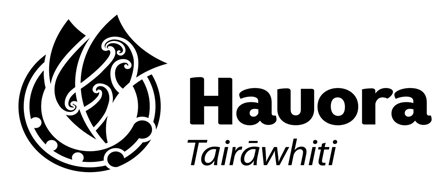
Sponsor: CCM Medical / Mental Health Name: Restraint Minimisation and Safe Practice
The RM&SP Committee shall review the use of restraint based on the data received from
Incident Reports, MHAS data and Individual Ward audits. This shall include but not be limited to:
o extent of restraint use and trends.
o Hauora Tairāwhiti progress in reducing restraint.
o staff compliance with policies and procedures.
o adverse outcomes.
o whether additional training or education is needed or changes to existing training are
required or any learning’s from evaluations.
5. Seclusion 5.1 Safe use of seclusion
Seclusion shall only be used by services with approved seclusion facilities (MHAS Ward 11/Te
Whare Awhiora only).
All seclusion shall comply with NZS 8134.2.2 and 8134 2.3.
Refer to MH&AS Seclusion Policy.
6. Cultural Considerations for Maori
Hauora Tairāwhiti recognises the specific cultural needs of Maori. Considerations should be given
to cultural requirements whilst restraining Tangata Whaiora/consumer/turoro (refer to Hauora
Tairāwhiti Tikanga Best Practice Guidelines)
7. Responsibilities
7.1 Training records
It is the responsibility of the CNMs or line managers to ensure that records of training are
maintained
The HR department maintains a centralised database of training.
8. Performance indicators
Review of restraint use at Hauora Tairāwhiti occurs monthly at the RM&SP Committee meeting.
Use of restraint in mental health is externally audited by the District Inspector.
Restraint use is internally audited 3 monthly by RM & SP committee to monitor compliance with
policy and procedures.
DEFINITIONS:
Advance Directive
A written or oral directive:
a. by which a consumer makes a decision about a possible future health procedure and;
b. that is intended to be effective only when the consumer is not competent.
De-escalation Enablers Equipment, devices or furniture,
voluntarily used by a consumer following appropriate assessment,
that limits normal freedom of movement, with the intent of promoting independence, comfort
and/or safety.
Author: Restraint Committee
Date of first approval: April 1999
Authorised By: Clinical Board Date last review completed: January 2015 Page
7 of
9
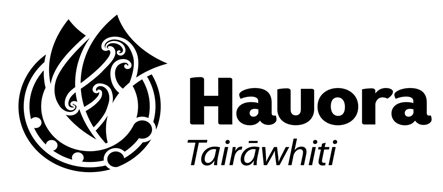
Sponsor: CCM Medical / Mental Health Name: Restraint Minimisation and Safe Practice
N.B.
Both
Enablers and Restraint limit the normal freedom of the consumer. Where the intent is to
promote independence, comfort and safety and the intervention is
voluntary, this constitutes an
Enabler. The use of Enablers should be the least restrictive option to safely meet the needs of the
consumer.
LEGISLATIVE REQUIREMENTS:
Hauora Tairāwhiti must comply with the following legislation: (this list is not exclusive)
Health and Safety in Employment Act 1992
Health and Disability Services (Safety) Act 2001
Human Rights Act 1993
Code of Health and Disability Services Consumers’ Rights 1996
Mental Health (Compulsory Assessment and Treatment) Act 1992
Criminal Procedures (Mentally Impaired Person) Act 2003
Intellectual Disability (Compulsory Care and Rehabilitation) Act 2003
Protection of Personal and Property Rights Act 1988 (PPPR Act)
Care of Children Act 2004
Privacy Act 1993
Employees Relations Act 2000
Treaty of Waitangi Act 1975
Crimes Act 1991
The New Zealand Bill of Rights 1990
ASSOCIATED DOCUMENTS:
Hauora Tairāwhiti
o Use of Bedrails/Cot Sides Guidelines, Te Whare Awhiora (Ward 11) Seclusion Policy
o Observation Form (Appendix 1)
o Restraint Minimisation and Safe Practice Committee Terms of Reference
o Self-directed learning package
o Enabler Use Guideline
o Care delivery - Specials/Watches
Restraint Audit Checklist
Paediatrics -Technical Positioning/Safe Holding Methods
Falls - Prevention and Management of Adult Consumer Falls
REFERENCES:
NZS 8134.2: 2008 Health and Disability Services (Restraint Minimisation and Safe Practice)
Standards.
8134.2.3: 2008 Health and Disability Services (Restraint Minimisation and Safe Practice) Seclusion
Standards.
Author: Restraint Committee
Date of first approval: April 1999
Authorised By: Clinical Board Date last review completed: January 2015 Page
8 of
9
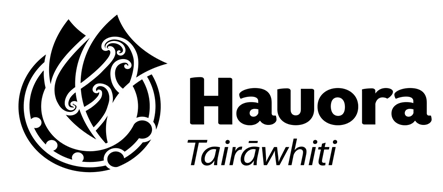
Sponsor: CCM Medical / Mental Health Name: Restraint Minimisation and Safe Practice
EVALUATION / REPORTING:
Clinical Board – Quarterly
Nurse Leader’s – Monthly
Date of Approval: January 2015
Next Review Date: January 2018
Click here for Appendix A: - Hauora Tairāwhiti Observation Form Click Here for Appendix 1: - Recording of Observations/Levels
Author: Restraint Committee
Date of first approval: April 1999
Authorised By: Clinical Board Date last review completed: January 2015 Page
9 of
9








